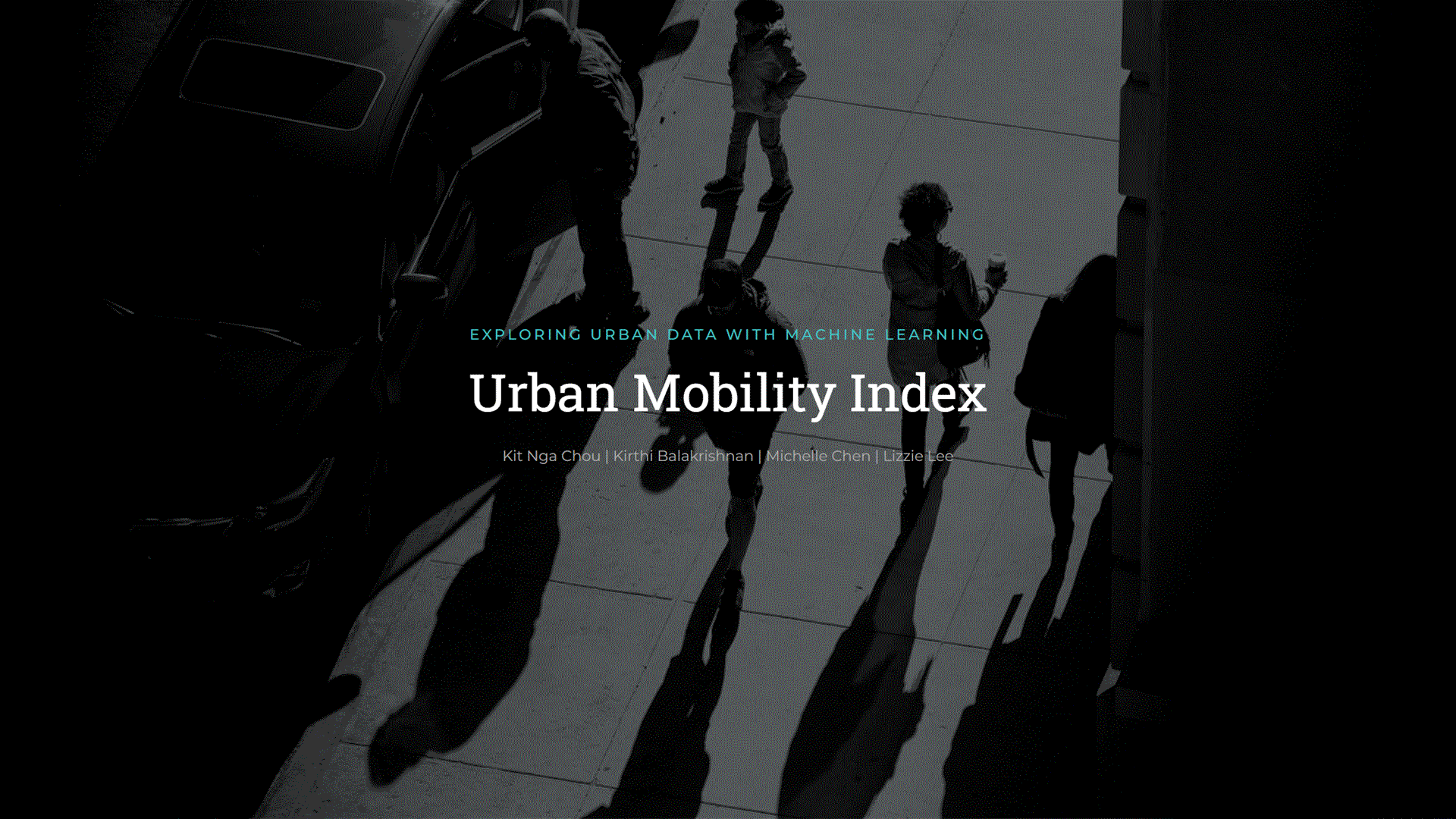Urban Mobility Index
Link to the (Interactive!) Project
Spring 2022
Exploring Urban Data with Machine Learning
Columbia GSAPP
Link to the (Interactive!) Project
Spring 2022
Exploring Urban Data with Machine Learning
Columbia GSAPP
One of the most pressing issues in urban mobility today is the dependency on vehicular transportation.
Cities are slowly but surely understanding the importance of walkable cities, not only for sustainability concerns, but also as a solution for the growing congestion and shortening commute for a better quality of life.
A tool that can look at the street characteristics of a city and assess its walkability score can be a useful analytical tool for urban planners, especially planners who are working on a city that neither have metrics pre-calculated nor the capacity to produce and work with raw data.
Cities are slowly but surely understanding the importance of walkable cities, not only for sustainability concerns, but also as a solution for the growing congestion and shortening commute for a better quality of life.
A tool that can look at the street characteristics of a city and assess its walkability score can be a useful analytical tool for urban planners, especially planners who are working on a city that neither have metrics pre-calculated nor the capacity to produce and work with raw data.
How can we utilize Walkscore.com’s pre-existing datasets of major cities to build a training model that can predict the efficiency of any city and/or neighborhood based on their street connectivity & transit density?

Project by Kirthi Balakrishnan, Kit Nga Chou, Lizzie Lee & Michelle Chen
Course by Professor Boyeong Hong